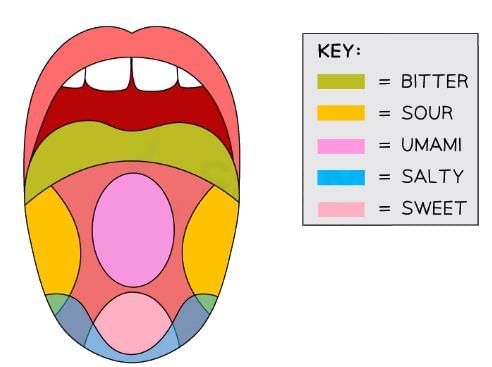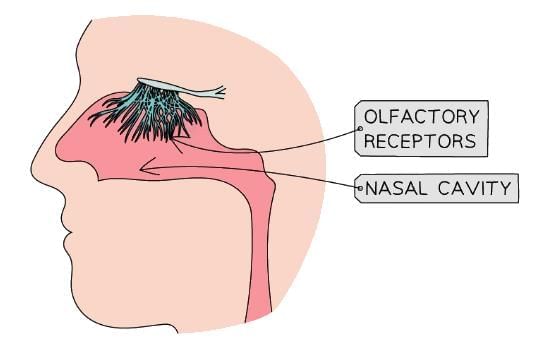Sensory Evaluation, The Biology of Tasting | Food & Nutrition for Year 6 PDF Download
Sensory Evaluation
Sensory Testing Methods
Sensory testing methods evaluate how different foods interact with our senses, providing critical data for product development and optimizing product sales.
Preference Tests
Preference tests assess consumer preferences for various food products to gauge their acceptability. Consumers evaluate products based on:
- Taste
- Texture
- Aroma
- Appearance
Participants provide an overall assessment to inform future product development. These tests are subjective, relying on individual opinions, so a large consumer group is tested to ensure data validity and reliability.
One type is the paired preference test, where testers receive two different food samples, each assigned a random number. They indicate which they prefer, and conclusions are drawn based on the majority preference.
Another method is hedonic ranking, which measures the degree to which testers like or dislike a product. Testers rank multiple samples using scales such as:
- Five-point scale:
- Dislike very much
- Dislike
- Neither like nor dislike
- Like
- Like very much
- Nine-point scale:
- Like extremely
- Like very much
- Like moderately
- Like slightly
- Neither like nor dislike
- Dislike slightly
- Dislike moderately
- Dislike very much
- Dislike extremely
Statistical analysis can then determine significant differences in product ratings.
Discrimination Tests
Discrimination tests identify whether noticeable differences exist between two or more foods, focusing on sensory distinctions rather than preference. The primary method is the triangle test, where testers receive three samples—two identical and one different—and must identify the odd one out.
Grading Tests
Grading tests assign ranks, ratings, or profiles to food products, measuring the intensity of specific sensory attributes. There are three types:
- Ranking tests: Testers order samples based on the strength of a specific characteristic, such as sweetness.
- Rating tests: Testers rate the degree of liking or disliking for a sensory property across similar foods or evaluate multiple properties of a single food.
- Profiling tests: Testers assess products based on how well descriptive terms (e.g., crispy, chewy, moist) apply, creating a detailed product description.
Setting Up a Taste Panel
A taste panel consists of:
- Trained testers: Experts trained to evaluate specific sensory attributes, used for quality control and detailed sensory analysis.
- Untrained consumers: Representatives of the target market, used for acceptability and preference testing.
The testing environment must be controlled to ensure valid results, with:
- A simple, distraction-free setting
- Carefully controlled lighting (e.g., colored light) to avoid color bias
- Sufficient space to separate testers
Testers should be:
- Non-smokers
- In good health, free from illnesses
- Free from strong personal biases that could affect responses
Food samples should be:
- Randomly presented
- Anonymously labeled
- Uniform in size
- Fresh
Testing equipment preparation includes:
- Identical equipment (size, shape, material) for presenting samples
- Neutral food carriers (e.g., bread or crackers) if typically consumed with the food, ensuring no flavor interference
- Water provided to cleanse the palate between samples
- A 30-second rest period between samples
The Biology of Tasting
Taste Receptors & Olfactory Systems
The flavors we perceive in food result from the combined action of taste receptors on the tongue and olfactory receptors in the nose. Additionally, the texture and feel of food in the mouth contribute to the overall flavor experience.
Receptors on the Tongue
- Taste receptors are located on the tongue’s surface and can detect five distinct tastes: sweet, salty, sour, bitter, and umami, the latter being a recently recognized taste associated with savory, meaty flavors.
- When food dissolves in saliva, it interacts with these receptors.
- Microscopic hairs within the receptors transmit signals to the brain, identifying the specific taste detected. Although taste receptors are distributed across the entire tongue, certain areas are more sensitive to specific tastes.
Tongue sensitivities diagram

Receptors in the Nose
- Olfactory receptors, found in the nose, are responsible for detecting smells and aromas.
- As food releases gases, these pass over the receptors in the nasal epithelial cells.
- The receptors then send signals to the brain, indicating the type of smell encountered.
Olfactory system diagram

|
89 docs|6 tests
|
FAQs on Sensory Evaluation, The Biology of Tasting - Food & Nutrition for Year 6
| 1. What is sensory evaluation and why is it important in tasting? |  |
| 2. How do our senses contribute to the tasting process? |  |
| 3. What role does the brain play in the perception of taste? |  |
| 4. Can sensory evaluation be used in food product development? |  |
| 5. What are some common methods used in sensory evaluation? |  |




















